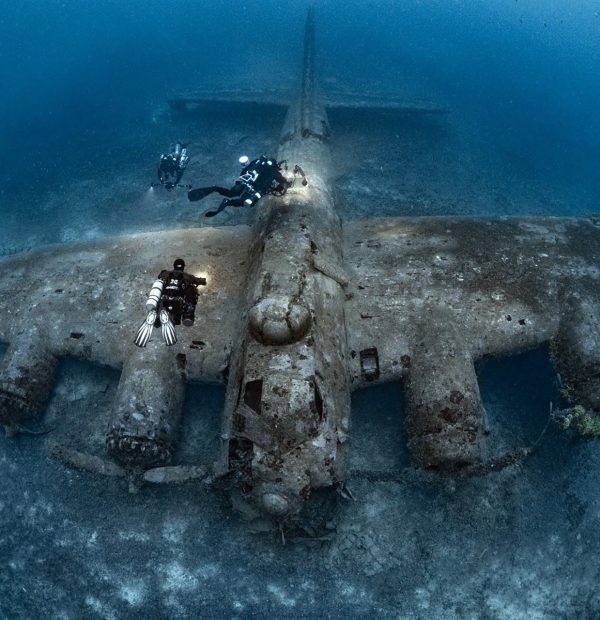Tuesday, 23 April 2024
Menu

For a long time it was difficult to unequivocally determine what exactly was the wreck lying on the seabed near Hel. There was a lot of conjecture and only detailed reconnaissance, measurements and work in the archives made it possible to determine the type, origin and exact copy of the vessel. The KriegsFishKutter type G was a boat designed in accordance with the construction guidelines, based on the following criteria: speed of construction, execution with commonly available materials, ability to perform basic combat tasks – port protection, convoy cover and coastal patrolling.
The Kriegsmarine was the least prepared for war of all German formations. In addition, when the area of the Third Reich grew significantly, the matter became even more complicated. The solution was not even units seized on the territory of conquered countries, rearmed and converted into warships, because often their constructional limitations prevented them from fulfilling military functions. An additional problem was the lack of uniformity and the associated problems with repair and obtaining parts. After all, there was a war on and any amount of raw material was worth its weight in gold.
The KFK type G was one of seven models tested before the decision was made to go into mass production. After obtaining the best results, it was decided to start the construction of entire batches of the new vessel. A total of 612 units were built, of which 135 were lost as a result of subsequent operations. Interestingly, the last units of this model could still be seen on the water in 2001!
The new vessel had an overall length of 24 metres, a width of 6.4 metres, a displacement of 10 BRT and a maximum draught of 2.75 metres. It was powered by a five-cylinder diesel engine of 175-220 hp, which set in motion a four-bladed propeller of 1.3 metres in diameter. The armament consisted of a 37 mm gun, 2-4 20 mm anti-aircraft guns and 6 depth charges. The whole was operated by a crew of 15 men.
The wreck of the popular “Kanonierka”, a copy of KFK 532, was probably built in the Gdynia shipyard in 1944. On 30 October it was assigned to the 3rd Flotilla Uboot Jager – a newly formed formation in Świnoujście. In the period from October 1944 to January 1945 she was stationed in Pilawa, being a part of the 9th Security Division. Then it was transferred to Hel, with the task of covering convoys (the evacuation action “Hannibal” was in progress). There it served as UJ 301 in Marineoberkomando, until 8 April 1945, when during the stoppage in the harbour it was hit by a bomb from an enemy plane. The fire, which was consuming the vessel, was uncontrollable, so the boat was taken out of the harbour and sunk with the help of the auxiliary ship R 71. Two crew members were killed in this incident.
After being sunk, the wreck was in excellent condition until February 2009. Unfortunately, due to the destruction of the underwater arsenal in the Gulf of Gdansk, carried out by the Navy, it was damaged by the detonation of depth bombs on board. Fortunately, about 75% of the whole remained, which was made available again for wreck divers on 27 April 2009.
The wreck begins at a depth of 27 metres, while at the bottom we encounter a depth of 32 metres. The vessel itself, considering the circumstances (hit by a bomb, fire, detonation of depth bombs), is in good condition. It sat on the bottom almost evenly on its keel, with a slight tilt to starboard. When diving at this location, you have to watch out for strong currents. Much of the deck and interior is covered with a large layer of sand. At the bow we can find a well-preserved cannon. As usual in such places, we will encounter a large population of cods, which have adopted UJ 301 as their habitat.










Welcome to DIVERS24.COM, your daily source of scuba news, freediving, scuba diving information, and equipment reviews. Our comprehensive coverage of the dive industry from A to Z provides you with all the latest scuba news, training updates, underwater photography tips, and everything else related to scuba diving. Whether you’re a beginner or an experienced diver looking for more knowledge about scuba gear or techniques – we’ve got it covered! With our in-depth articles written by experienced divers who have been there and done that, you are sure to find exactly what you need here at Divers24.com. Dive into scuba news today!
Underwater Media Sp. z o.o.
Szafarnia 11/F8,
80-755 Gdansk, Poland
Welcome to DIVERS24.COM, your daily source of scuba news, freediving, and scuba diving information. Sign in for a weekly news update and discount coupons for dive gear and apparel.
@2023 - underwatermedia.pl. All Right Reserved. Designed and Developed by Tworzenie stron internetowych Gdansk

The Divers24 portal is currently the largest online medium treating diving in Poland. Since 2010 we have been providing interesting and important information from Poland and around the world on all forms of diving and related activities.
Contact us: info@divers24.com